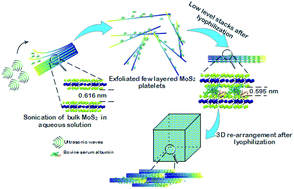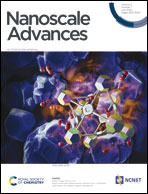‘Template-free’ hierarchical MoS2 foam as a sustainable ‘green’ scavenger of heavy metals and bacteria in point of use water purification†
Abstract
Molybdenum disulfide (MoS2), with its unique optical and electrical properties, has been explored for a variety of applications in the recent past. Still, its capabilities in point-of-use heavy metal ion removal remain to be explored. Herein, for the first time using a facile approach, we fabricated three-dimensional (3D) MoS2 foam from exfoliated single to few-layered MoS2 sheets for the selective exclusion of heavy metals and stringent bactericidal response. This foam was able to exclude 99.9% of Pb(II) and 98.7% of As(III) instantaneously and reduced more than 98% of bacteria E. coli. Moreover, the foam exhibits selective toxicity towards bacterial cells while showing no observable toxicity towards mammalian cells. The foam can be recycled and reused for at least five cycles under accelerated conditions and thus can be used for a promising non-cytotoxic, facile, and environmentally benign process for inline water remediation to remove heavy metal ions from the feed and as a potential antibacterial agent.

- This article is part of the themed collection: Popular Advances


 Please wait while we load your content...
Please wait while we load your content...